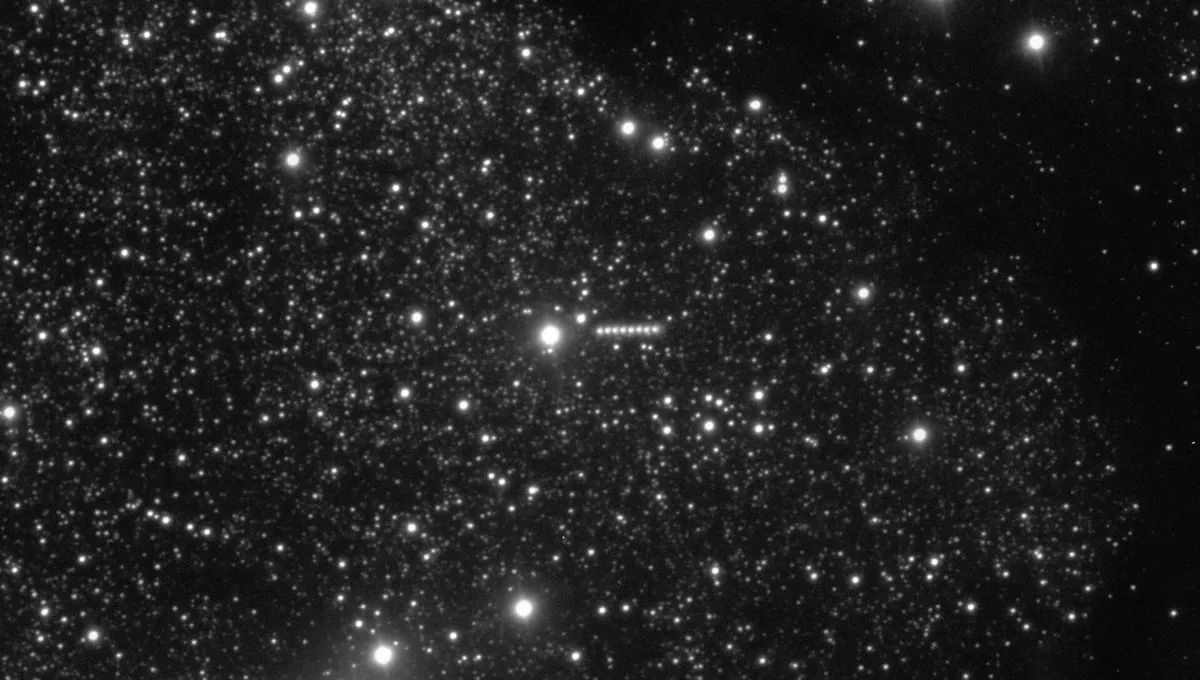
Last week marked a significant milestone for Matthew Hopkins, who successfully defended his PhD thesis focused on modeling interstellar objects within the Milky Way. On Monday, he presented his groundbreaking research, and just a day later, he informed his supervisor, Professor Chris Lintott, that he would take a brief hiatus before diving into the necessary edits. However, the cosmos had other plans, as Comet 3I/ATLAS made headlines, prompting Hopkins to return to his research for further insights into this intriguing interstellar visitor.
Hopkins, who is the lead author of the new paper detailing these findings, expressed his enthusiasm to IFLScience, noting, "I've been anticipating the chance to compare my predictions to new data for four years, and 3I/ATLAS is already providing us with new insights into this fascinating galaxy-spanning population." Alongside Lintott, Hopkins is part of a six-author team that has developed a model tracing the origin of Comet 3I/ATLAS, revealing that it comes from a completely different region of the galaxy than prior interstellar visitors.
Early access to the yet-to-be-peer-reviewed paper by IFLScience indicates that Comet 3I/ATLAS likely originated from an ancient star located in the thick disk of the Milky Way. "We think this object has been wandering in our galaxy for longer than the age of the Solar System," Professor Lintott remarked. This groundbreaking research allows scientists to predict the population of interstellar objects that inhabit our galaxy, estimating a staggering 1027 such objects exist within it.
One remarkable aspect of Comet 3I/ATLAS is its speed. The comet is traveling at nearly double the velocity of previous interstellar visitors, with estimates placing its speed at around 57 kilometers (36 miles) per second. In comparison, 'Oumuamua, discovered in 2017, moved at approximately 26.33 kilometers (16.36 miles) per second, while Comet 2I/Borisov, found in 2021, traveled a bit faster at 32.2 kilometers (20 miles) per second.
Recent preprint papers published on the ArXiv server highlight that Comet 3I/ATLAS significantly deviates from expectations. Observations made using the Very Large Telescope (VLT) from the European Southern Observatory suggest that this comet exhibits a color more akin to the Centaur population of asteroids than to typical Solar System comets. Another study emphasizes that the most significant differences are observed when comparing Comet 3I/ATLAS to 'Oumuamua and Comet Borisov.
Professor Lintott elaborated on the implications of these findings, stating, "If it is indeed from the thick disk, we are witnessing an object from a region of the galaxy we have never explored before." The thick disk, situated above and below the Milky Way's plane, is where older stars typically reside, making Comet 3I/ATLAS a unique discovery.
The research team has formulated a testable hypothesis regarding Comet 3I/ATLAS: the presence of water. "Our model indicates that older stars tend to produce water-rich interstellar objects. If our predictions hold true, we should observe an increase in cometary activity as this comet approaches the Sun," Professor Lintott noted. This exciting potential underscores the significance of this comet and its origins.
With estimates suggesting that there are 10,000 interstellar objects within the orbit of Neptune on any given day, it’s not surprising that many remain undetected due to their dark nature. However, advancements in technology are changing this dynamic. The Vera C. Rubin Observatory has demonstrated its capability to discover over 2,000 new asteroids in just a few nights, paving the way for further exploration of these celestial bodies.
As Professor Lintott aptly stated, "The reason I got excited about studying stellar objects is that there's this theory that they may contribute to the material forming stars and planets, potentially kickstarting planet formation." This notion not only excites scientists but also reflects the joy of discovery that drives astronomers. The paper detailing these findings has been submitted to The Astrophysical Journal Letters and will soon be accessible on the ArXiv, marking yet another milestone in our understanding of the universe.